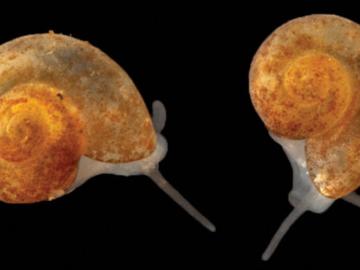
Filter News
Area of Research
- (-) Energy Science (38)
- (-) Materials (49)
- Advanced Manufacturing (2)
- Biology and Environment (50)
- Biology and Soft Matter (1)
- Computational Engineering (1)
- Computer Science (1)
- Electricity and Smart Grid (1)
- Functional Materials for Energy (1)
- Fusion and Fission (4)
- Fusion Energy (1)
- Isotope Development and Production (1)
- Isotopes (27)
- Materials for Computing (2)
- Mathematics (1)
- National Security (23)
- Neutron Science (16)
- Nuclear Science and Technology (11)
- Quantum information Science (2)
- Supercomputing (56)
News Topics
- (-) Clean Water (10)
- (-) Cybersecurity (10)
- (-) Frontier (3)
- (-) Isotopes (13)
- (-) Physics (28)
- (-) Space Exploration (5)
- 3-D Printing/Advanced Manufacturing (90)
- Advanced Reactors (9)
- Artificial Intelligence (13)
- Big Data (7)
- Bioenergy (30)
- Biology (12)
- Biomedical (10)
- Biotechnology (4)
- Buildings (38)
- Chemical Sciences (33)
- Composites (19)
- Computer Science (36)
- Coronavirus (14)
- Critical Materials (19)
- Energy Storage (85)
- Environment (64)
- Exascale Computing (3)
- Fossil Energy (2)
- Fusion (7)
- Grid (40)
- High-Performance Computing (9)
- Hydropower (3)
- Irradiation (1)
- ITER (1)
- Machine Learning (10)
- Materials (94)
- Materials Science (90)
- Mathematics (3)
- Mercury (3)
- Microelectronics (1)
- Microscopy (29)
- Molten Salt (3)
- Nanotechnology (41)
- National Security (6)
- Neutron Science (42)
- Nuclear Energy (22)
- Partnerships (16)
- Polymers (21)
- Quantum Computing (3)
- Quantum Science (12)
- Security (7)
- Simulation (4)
- Statistics (1)
- Summit (6)
- Transportation (70)
Media Contacts

Researchers at Oak Ridge National Laboratory developed a method that uses machine learning to predict seasonal fire risk in Africa, where half of the world’s wildfire-related carbon emissions originate.

In the search to create materials that can withstand extreme radiation, Yanwen Zhang, a researcher at the Department of Energy’s Oak Ridge National Laboratory, says that materials scientists must think outside the box.

Giri Prakash, data informatics scientist and director of the Department of Energy’s Atmospheric Radiation Measurement Data Center at Oak Ridge National Laboratory, has accepted an invitation from the National Academies of Sciences, Engineering, and Medicine to serve a four-year term on the U.S. National Committee for CODATA.
An international team of scientists found that rules governing plant growth hold true even at the edges of the world in the Arctic tundra.

Sometimes conducting big science means discovering a species not much larger than a grain of sand.
A team of scientists led by Oak Ridge National Laboratory found that while all regions of the country can expect an earlier start to the growing season as temperatures rise, the trend is likely to become more variable year-over-year in hotter regions.

Scientists at have experimentally demonstrated a novel cryogenic, or low temperature, memory cell circuit design based on coupled arrays of Josephson junctions, a technology that may be faster and more energy efficient than existing memory devices.

While Tsouris’ water research is diverse in scope, its fundamentals are based on basic science principles that remain largely unchanged, particularly in a mature field like chemical engineering.

Researchers at the Department of Energy’s Oak Ridge National Laboratory have received five 2019 R&D 100 Awards, increasing the lab’s total to 221 since the award’s inception in 1963.

The National Alliance for Water Innovation, a partnership of the Department of Energy’s Oak Ridge National Laboratory, other national labs, university and private sector partners, has been awarded a five-year, $100 million Energy-Water Desalination Hub by DOE to address water security issues in the United States.


